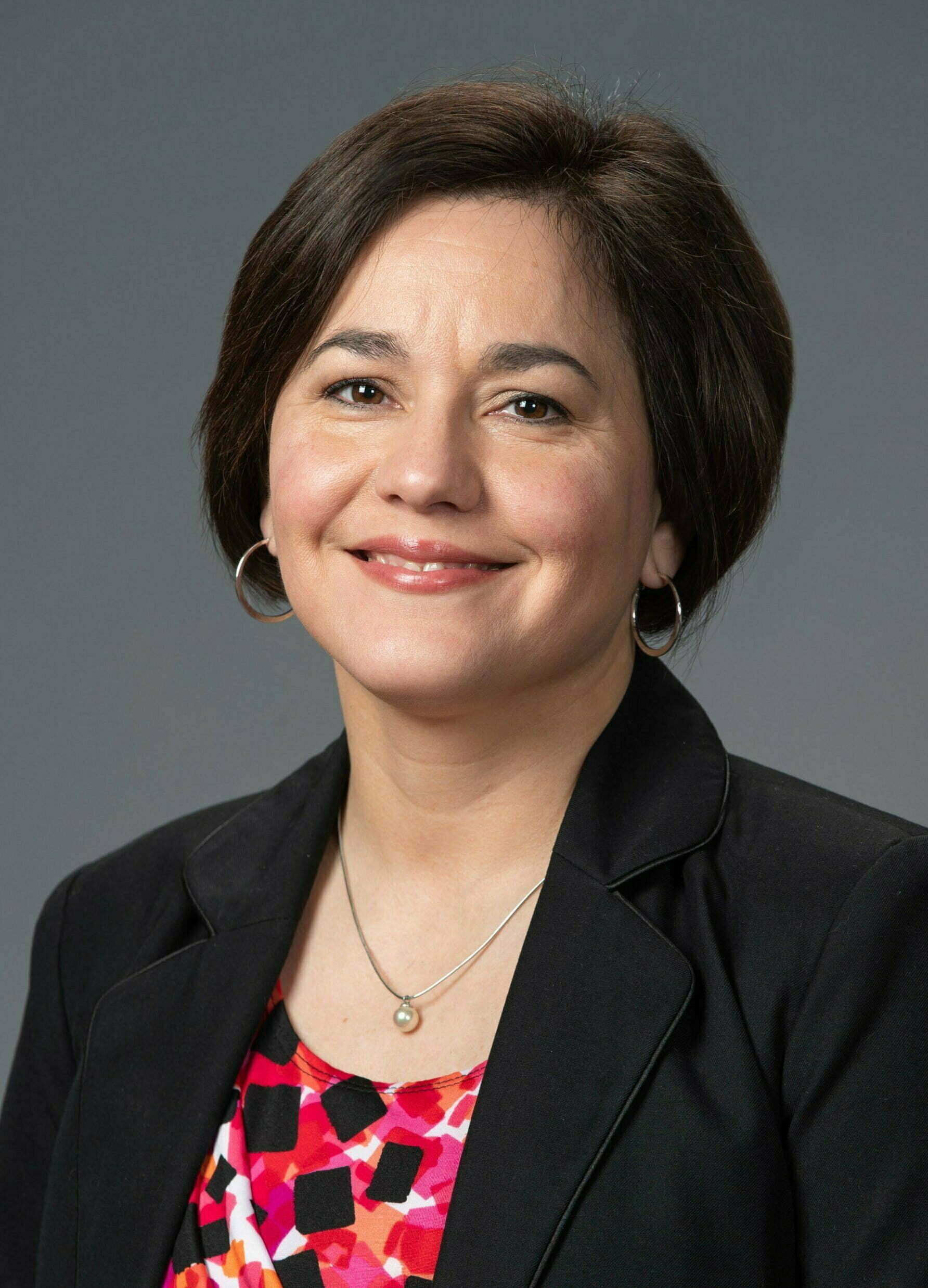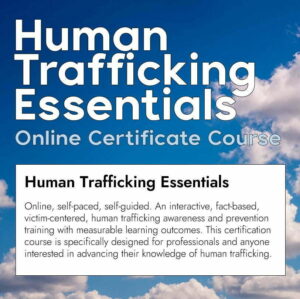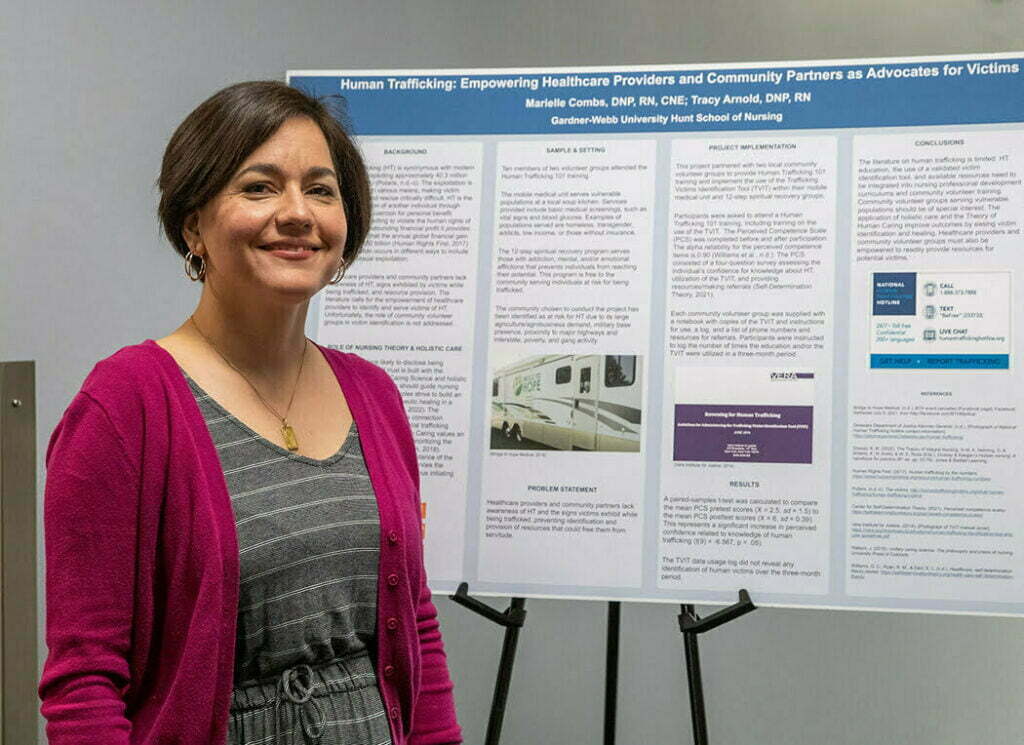PBJ Learning Announces New Advisory Board Member Marielle Combs, DNP, RN, CNE
Journal of Holistic Nursing author and certified nurse educator joins human trafficking prevention training leadership
 PBJ Learning, the creator of Human Trafficking Essentials, a leading online human trafficking awareness and prevention course, is pleased to announce the addition of a new member to its Advisory Board, Dr. Marielle Combs. Dr. Combs uses her educational expertise to empower future nurses and the community in human trafficking identification, rescue, and the healing of survivors. Her extensive educational experience will guide PBJ Learning's training curriculum.
PBJ Learning, the creator of Human Trafficking Essentials, a leading online human trafficking awareness and prevention course, is pleased to announce the addition of a new member to its Advisory Board, Dr. Marielle Combs. Dr. Combs uses her educational expertise to empower future nurses and the community in human trafficking identification, rescue, and the healing of survivors. Her extensive educational experience will guide PBJ Learning's training curriculum.
“Right out of the gate, Marielle rolled in with a lengthy critique of our online course,” says Billy Joe Cain, PBJ Learning's co-founder and creative director. “It made me cry tears of joy. I love improving our products to make them more effective and I'm so happy to have her on board.”
Dr. Combs is an experienced certified nurse educator, published author (“Human Trafficking: Empowering Healthcare Providers and Community Partners as Advocates for Victims” – more below), and advocate for increasing anti-human trafficking awareness. She also is the nursing education director for the anti-trafficking non-profit organization, Exitus.
With regard to PBJ Learning's online course, she says, “The segments and activities were so engaging that I felt excited and accomplished at the end of each one as my intellectual growth was evident.” She continues, “It is atypical for virtual trainings (even some created for masters and doctoral prepared audiences) to reach this level of detail and commitment to produce a diverse virtual learning environment.”
Cain summarizes, “Having Marielle on our advisory team is bringing a whole new perspective and forward-thinking methodology to our mix. It's obvious we're going to have to keep up with her.“
_________________________________________
ABOUT HUMAN TRAFFICKING ESSENTIALS
 Human Trafficking Essentials‘ learning objectives are aligned with authoritative sources and the most promising practices in the field. Data and sources used in the course have been reviewed and approved by law enforcement, survivors, and advocates. PBJ Learning guarantees their continuing education credits meet or exceed any requirements for human trafficking training. The Project Management Institute, for example, recognizes them for their Project Management Professional (PMP) certificate holders.
Human Trafficking Essentials‘ learning objectives are aligned with authoritative sources and the most promising practices in the field. Data and sources used in the course have been reviewed and approved by law enforcement, survivors, and advocates. PBJ Learning guarantees their continuing education credits meet or exceed any requirements for human trafficking training. The Project Management Institute, for example, recognizes them for their Project Management Professional (PMP) certificate holders.
ABOUT PBJ LEARNING
PBJ Learning is a leading provider of online human trafficking awareness and prevention education. Their Human Trafficking Essentials online course is being used worldwide to educate professionals and individuals how to recognize human trafficking and how to respond to a potential victim. Their course is available for use on any web browser at any time.
ABOUT EXITUS
For years, our founders have been operating in the shadows, finding the most vulnerable and exploited, opening the doors for their freedom and healing. EXITUS operators are everyday people just like you – single moms, fathers, medical providers, gym-goers, hardworking employees. We work our day jobs then after hours, we work tirelessly to make a way for their escape. Our teams personally know those suffering from the trauma of human trafficking. We know their stories. We know their pain and we know their needs. We believe in relationship based rescuing, sustainable and holistic models of identifying, developing trust with exploited persons, and then creating pathways for them to leave their exploitation. Our model opens the door to freedom, peace, and healing through these exit pathways and relationship based rescue efforts.
“Human Trafficking: Empowering Healthcare Providers and Community Partners as Advocates for Victims”
Read Dr. Combs' paper on the Journal of Holistic Nursing.
Abstract
Human trafficking, also known as modern-day slavery, is a public health crisis and a growing worldwide crime exploiting approximately 40.3 million victims. A decade ago approximately 79% of human trafficking crimes were related to sexual exploitation and 18% were related to forced labor, but more recent reports show approximately 50% and 38%, respectively. Although sexual exploitation continues to make up the majority of human trafficking crimes, forced labor continues to grow at an alarming rate. The purpose of this paper is 2-fold. First, to empower healthcare providers and community volunteers serving potential victims of human trafficking in traditional and nontraditional settings with human trafficking identification training. This education should include the use of a validated human trafficking screening tool and the timely provision of resources. Second, to guide professional nurses in the holistic approach to caring for potential victims of human trafficking. The core values of holistic nursing practice and Watson's Theory of Human Caring are the pillars guiding mindful and authentic nursing care. Merging evidence-based practice with holistic care will boost victim identification and rescue.
References
Bigelsen, J., Vuotto, S. (2013). Homelessness, survival sex and human trafficking: As experienced by the Youth of Covenant House New York. https://humantraffickinghotline.org/sites/default/files/Homelessness,%20Survival%20Sex,%20and%20Human%20Trafficking%20-%20Covenant%20House%20NY.pdf
Google Scholar
Burkhardt, M. A., Nagai-Jacobson, M. G. (2022). Spirituality and health. In Helming, M. A., Shields, D. A., Avino, K. M., Rosa, W. E. (Eds.), Dossey & Keegan's holistic nursing: A handbook for practice (8th ed., pp. 121–142). Jones & Bartlett Learning.
Google Scholar
Center for Self-Determination Theory. (2021). Healthcare, self-determination theory packet. https://selfdeterminationtheory.org/health-care-self-determination-theory/
Google Scholar
Chisolm-Straker, M., Baldwin, S., Gaigbe-Togbe, B., Ndukwe, N., Johnson, P. N., Richardson, L. D. (2016). Health care and human trafficking: We are seeing the unseen. Journal of Health Care for the Poor and Underserved, 27(3), 1220–1233. https://doi.org/10.1353/hpu.2016.0131
Google Scholar | Crossref | Medline
Chisolm-Straker, M., Sze, J., Einbond, J., White, J., Stoklosa, H. (2019). Screening for human trafficking among homeless young adults. Children and Youth Services Review, 98, 72–79. https://doi.org/10.1016/j.childyouth.2018.12.014
Google Scholar | Crossref
Gillipsie, V., Russo, J. A., Shah, K. (2019). Committee opinion: Human trafficking. The American College of Obstetricians and Gynecologists, 134(3), 90–95. https://doi.org/10.1097/AOG.0000000000003427
Google Scholar
Human Rights First. (2017). Human trafficking by the numbers. https://www.humanrightsfirst.org/resource/human-trafficking-numbers
Google Scholar
Leslie, J. (2018). Human trafficking: Clinical assessment guideline. Journal of Trauma Nursing, 25(5), 282–289. https://doi.org/10.1097/JTN.0000000000000389
Google Scholar | Crossref | Medline
Mariano, C. (2022). Holistic nursing: Scope and standards of practice. In Helming, M. A., Shields, D. A., Avino, K. M., Rosa, W. E. (Eds.), Dossey & Keegan's holistic nursing: A handbook for practice (8th ed., pp. 25–52). Jones & Bartlett Learning.
Google Scholar
North Carolina Department of Administration . (2021). What is human trafficking? https://ncadmin.nc.gov/advocacy/women/human-trafficking/what-human-trafficking#human-trafficking-in-north-carolina
Google Scholar
Polaris . (2021a). 2018 statistics from the National Human Trafficking Hotline. https://humantraffickinghotline.org/sites/default/files/Polaris_National_Hotline_2018_Statistics_Fact_Sheet.pdf
Google Scholar
Polaris . (2021b). 2019 statistics from the National Human Trafficking Hotline. https://polarisproject.org/2019-us-national-human-trafficking-hotline-statistics/
Google Scholar
Powell, C., Dickins, K., Stoklosa, H. (2017). Training US health care professionals on human trafficking: Where do we go from here? Medical Education Online, 22(1), 1–11. https://doi.org/10.1080/10872981.2017.1267980
Google Scholar | Crossref
Quinn, J. F. (2022). Transpersonal human caring and healing. In Helming, M. A., Shields, D. A., Avino, K. M., Rosa, W. E. (Eds.), Dossey & Keegan's holistic nursing: A handbook for practice (8th ed., pp. 97–106). Jones & Bartlett Learning.
Google Scholar
Ross, C., Dimitrova, S., Howard, L. M., Dewey, M., Zimmerman, C., Oram, S. (2015). Human trafficking and health: A cross-sectional survey of NHS professionals' contact with victims of human trafficking. British Medical Journal Open, 5(8), 1–7. https://doi.org/10.1136/bmjopen-2015-008682
Google Scholar
Sampson, M. (2018). Cry Freedom: Courage and compassion in rescue and recovery. https://encstophumantrafficking.org/cry-freedom-courage-compassion-rescue-recovery/
Google Scholar
Schwarz, C., Unruh, E., Cronin, K., Evans-Simpson, S., Britton, H., Ramaswamy, M. (2016). Human trafficking identification and service provision in the medical and social service sectors. Health and Human Rights Journal, 18(1), 181–192.
Google Scholar | Medline
Sweileh, W. M. (2018). Research trends on human trafficking: A bibliometric analysis using Scopus database. Globalization and Health, 14(106), 2–12. https://doi.org/10.1186/s12992-018-0427-9
Google Scholar | Medline
Tiller, J., Reynolds, S. (2020). Human trafficking in the emergency department: Improving our response to a vulnerable population. Western Journal of Emergency Medicine, 21(3), 549–554. https://doi.org/10.5811/westjem.2020.1.41690
Google Scholar | Crossref
Vera Institute of Justice . (2014). Screening for human trafficking: Guidelines for administering the Trafficking Victim Identification Tool (TVIT). https://www.vera.org/downloads/publications/human-trafficking-identification-tool-and-user-guidelines.pdf
Google Scholar
Watson, J. (2018). Unitary caring science: The philosophy and praxis of nursing. University Press of Colorado.
Google Scholar | Crossref

